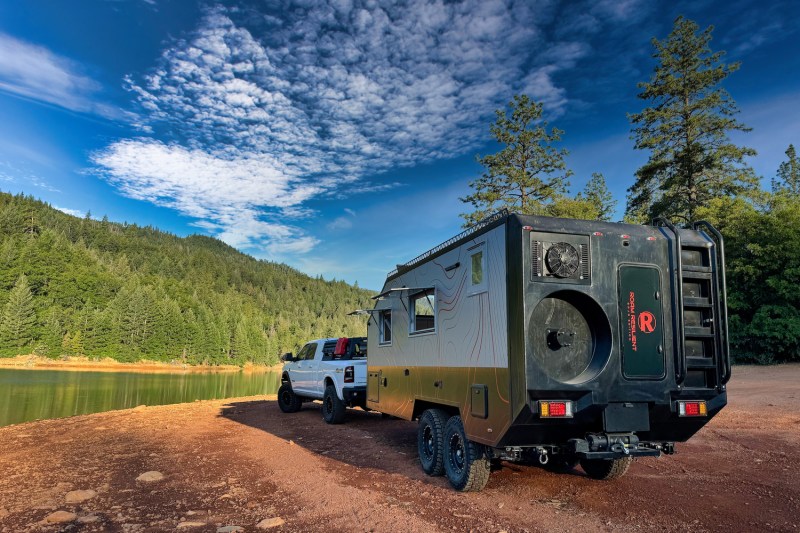
Overland-ready travel trailers have come a long way in just the last five years. Gone are the days when the only off-road-capable rigs were stripped down to within an inch of their lives. Many of today’s best models are like upscale studio apartments inside, while their exteriors retain all the rugged, go-anywhere capability of their forefathers. Case in point: Roam Resilient Expedition Vehicles’ (RREV, for those in the know) all-new Baja Edition overland trailer.
Everything we know about Roam Resilient’s all-new Baja Edition overland trailer

The Baja Edition is the Redding, California company’s first ready-to-roll product, and it’s a stunner. By the numbers, this is truly a go-anywhere trailer. It’s built tough on a galvanized steel chassis, riding on beefy 33-inch Mickey Thompson Baja Boss A/T tires and RREV’s own independent swingarm air suspension system. Coupled with a unique Cruisemaster DO45+ articulating hitch designed to twist and move freely with the tow vehicle, the entire setup is purpose-built to tackle the toughest and most technical trails.
Roam Resilient is quick to point out that the Baja Edition was specifically built to withstand extreme temperatures. That means 2.25-inch thick walls and three-inch flooring—all made with foam core PET-skinned panels with an aluminum skin fused to the exterior. Every window is double-paned for improved sound deadening and temperature regulation. All of this ensures the Baja is a true four-season rig designed for year-round camping, especially if you upgrade to the available diesel air/water heater and custom Matsushita A/C unit.

Inside, the 19-foot Baja Edition is a real “home away from home.” It’s bright with a surprisingly spacious floor plan, including room for dedicated sleeping quarters, a four-person convertible dinette/sofa, a galley kitchen, and a stand-up wet bath complete with a shower stall and cassette (or optional composting) toilet. The kitchen is outfitted with a sizable countertop, a larger-than-average sink, a portable induction cooktop, and a fridge—all with the option to add a full-size electric oven for backcountry cooking aficionados. Plus, there’s even an expandable outdoor kitchen standard.
Off-grid-centric features abound. That includes two large freshwater tanks with a total 81-gallon capacity, plus an additional 10-gallon drinking water tank with an integrated filter. A clever water collection system—including a front-sloping roof to encourage rainwater collection and an AC drain pipe that’s plumbed to collect additional water—helps extend your longest off-grid adventures. Add to that a 400Ah 24V lithium battery bank fed by 1,400W (with the option to upgrade to 1,900 watts) of rooftop solar, and the sky is truly the limit for just how long the Baja can survive in the backcountry.
Get your own Roam Resilient Baja Edition overland travel trailer

Roam Resilient is offering special early bird pricing on the first 20 units of the Baja Edition overland trailer, with a promotional starting price of just $99,000 for the inaugural Founder’s Edition. After that, standard pricing will start at $120,000 before you add all the fixin’s. The company expects a lead time of six months. So, if you order now, you might have your very own Baja in your driveway just in time for the winter camping season.


